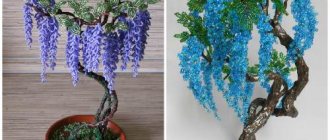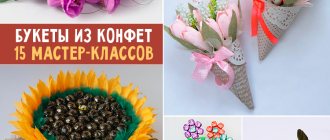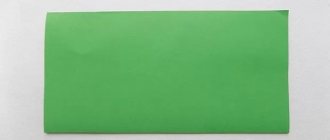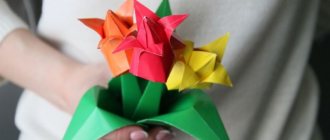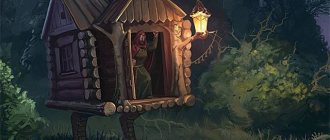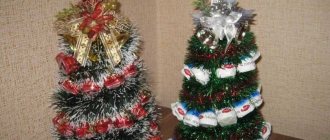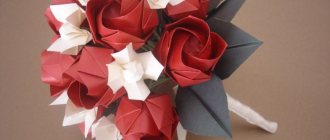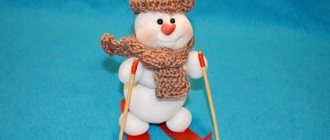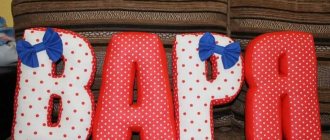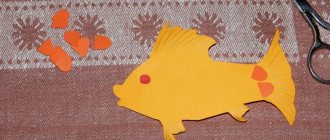Balloon flowers. Photo: UGC Flowers are an important addition to the main gift. But if the bouquet is large and beautiful, then you can give it as an independent gift. The only disadvantage of such a gift is that it quickly fades. And artificial flowers will not be able to evoke such emotions. But there is a very good alternative - flowers made from balloons. You can buy a bouquet of daisies, roses, tulips, but if suddenly the assortment of products is not to your liking, try making the necessary figures from balloons at home.
Ball selection
Each master decides which balls to use for himself. These can be simple balls that are sold in every supermarket.
But if you need the flower to retain its presentation for a long time, it is recommended to make a composition from long balls. They are sold in gift shops, specialty sections of supermarkets and online markets.
How to make a flower arrangement from balloons: aerodesign ideas, diagram, photo, description
There are a huge number of flower arrangements. They can be used on September 1 and open the Day of Knowledge. Below are the most interesting options.
flower arrangement made from balloons flower arrangement made from balloons flower arrangement made from balloons flower arrangement made from balloons
Color selection
Before you start making flowers, you should choose a color scheme. If there is only one flower, you will need a green ball for the stem and several balls of the same color for the petals.
If you intend to create an entire composition, select colors carefully.
DIY bouquet of tulips from balloons
To make a bouquet you will need:
- shdm 260: green 5 pcs., multi-colored 5 pcs., red 2 pcs.;
- hand pump;
- scissors.
Let's make tulips and collect them into a gift bouquet:
A tulip bud can be twisted in two ways. Inflate the shdm, leave a tail of 3 cm. Tie the tail and a knot near the neck. Let's straighten the air inside. Fold it in half and twist it in the middle. Visually we divide two parallel parts into three transverse ones, as shown in the photo. We make transverse pairwise twists. Under the middle part, we place the first, then the second connected pair in pairs.
The second option starts the same way. Inflate the ball, but leave the tail 5 cm. Knead the ball, distribute the air for flexibility in work. We make 6 identical segments sequentially. We tie the tail and the knot at the neck. We twist 1-2, 3-4 and 5-6 segments. At 3-4 we start 1-2 and 5-6 sequentially. We straighten the petals and places of twists.
We tie the green stem to the bud. So that the place of the ligament is not visible, we form a sepal. Near the tulip bud we make 3 identical green leaves.
We twist the remaining tulips using the first or second method. We form a bunch of red balloons for a bouquet.
Using an inflated balloon, we check the length of the packaging strap and twist it. Using scissors, trim off the excess length and tie a knot.
From the second red shdm we twist a bow with a center. We tie a bow to the balloon tying the bouquet. The bouquet of balloons is ready.
Safety precautions
Before you learn how to make flowers out of balloons step by step, you need to familiarize yourself with the safety rules.
- It is always worth remembering that the ball may burst during operation. It should be placed as far from the face as possible.
- Round balls cannot be twisted.
- The balls burst easily due to long nails. Before starting work, it is better to trim them.
- To decorate the balls with designs, it is best to use water-based markers.
Now, it's time to learn how to make a flower from a sausage ball.
Note!
- DIY fruit bouquets - TOP-200 photos with instructions for creating a bouquet of fruits with your own hands. Unconventional ideas with simple diagrams and work overviews
- Crocheted flowers: TOP-160 photos and step-by-step knitting pattern, review of finished products with your own hands. Crochet master class for beginners
- Paper lily - TOP 100 photos of the best product options. Master class with step-by-step diagrams and drawings for creating an origami lily with your own hands
What does a beginner twister need?
Before you make a full-fledged flower bouquet from balloons, you need to practice inflating air “sausages” and manipulating them. Let's prepare:
- modeling balls sizes 160, 180 and 260;
- hand pump;
- sharp stationery scissors;
- double sided tape.
In preparation for modeling:
- put your hair in a ponytail or use a hoop;
- wash our hands with soap, without using moisturizers or greasy products, such as creams;
- remove jewelry with sharp and scratchy stones and edges from your fingers;
- inspect your hands for sharp, chipped nails or keratinized cuticles, remove them if found;
- We put on an apron, talc spills out of the balls and is noticeable on our clothes.
It is better to carry out the first experiments without professional skills at a table where we will place all the necessary items and tools. The table should be dry, smooth, dust-free. Experienced fashion designers do not place twisted parts on the surface. Everything that is already inflated is held in the armpits, fingers or knees.
Before inflating, stretch the balloon and slightly press it along its length with your fingers. We place the neck of the shdm between the thumb and forefinger, insert the pump inside, hold it with the whole palm, and pump it up. We continue to inflate until there remains a “tail” of a given length of 3-8 cm. At first, this process will seem difficult: the balls tear, slip, unplanned bumps stick out on the side, it is not possible to stop in time and the tail ends up longer or shorter. After a few trials and errors, you will be able to organize the process correctly.
Chamomile made from long balls
Don't inflate the balloons all the way. Long balloons should have an uninflated tail. With its help you can twist and tie the balls.
- Using a pump, inflate the balloons so that a tail measuring five centimeters remains.
- After this, you need to lower the ball a little and tie the hole with the ball.
- Now you need to connect the two ends to make a semicircle.
- Divide the piece into three sections. These will make petals.
- Now you need to take the workpiece in your hands so that there are 3 petals on top and bottom.
- Gently twist the petals together and unfold them. This simple manipulation will allow you to get 6 identical petals, similar in shape to the petals.
- After this, you need to inflate the green ball. A stem will be made from it.
- Separate a third of the ball by twisting it.
- The blank with petals must be threaded onto the stem. The separated part should be in the middle.
- Secure the part from below.
Rules for quality twisting
For beginning shdm fashion designers, some rules and techniques will be useful:
- When inflating, an “empty” tail is left in the part of the product opposite the neck. The length of the ponytail is determined by the number of twists. The more bubbles are formed, the longer the empty area should remain.
- Beginning twisters do not need elastic, tightly inflated balls; after inflating, they are slightly loosened. The soft workpiece is more manageable in your hands. But the more experience, the tighter the workpiece is inflated.
- The neck is tied with a simple knot, which can be undone or re-tied.
- The modeling begins from the neckline and tied knot to the empty ponytail.
- Joints of bubbles and individual elements on the shdm are formed by reciprocal rotation. The right hand moves to the right, the left hand moves to the left, simulating squeezing water out of the laundry.
- All formed bubble elements are created by rotating in one direction. If the sides of rotation are changed each time, the product will unwind.
- The finished elements are fixed by hand or by twisting. The designer creates new subsequent elements with the long part of the ball with a “tail”; this is where the necessary mobility and reserve are left.
- The twist between the balls must be at least 360 degrees, otherwise they will unravel. This means they make at least one, and preferably 2-3 full revolutions.
- Beginner twisters are advised to lightly crush the ball before twisting, but not to get too carried away, because the soft ball is too elastic and will not hold the twist.
- When developing skills, you can twist the ball not by kneading, but by stretching it. This type of twisting is more professional, but requires good starting material, not cheap, fragile latex that will break when stretched.
Instructions for Beginners
Making a flower from round balls is no more difficult than from long ones.
Note!
Crochet rose - diagrams and descriptions of how to crochet a rose with your own hands. Crochet technology + interesting craft ideas
- DIY edible bouquets - TOP 130 photos with instructions for creating a bouquet with your own hands. Creative ideas with simple diagrams and photos of finished works
- Craft primroses - simple instructions for creating crafts from scrap materials. Schemes of beautiful DIY products + photo reviews
Inflate and tie the balloons for the petals. To ensure that the workpieces are the same, it is recommended to calculate the number of presses on the pump. For a flower with five petals, the optimal number is four.
Now you need to tie the balls together in twos. To do this, twist the tails of the balls 2-3 times. The twist is fixed with knots. We screw the fifth petal into one of the twos.
Remember that knots do not hold air. To prevent the balloons from deflating, you need to twist them. And the knots simply fix the twist.
After this, you need to tie two blanks together so that all 5 petals are fastened together.
The next stage of the scheme for creating a flower from a balloon involves inflating the core. Remember that the middle part should be smaller than the petals.
Note!
Crafting tulips from paper - TOP-100 photos of interesting ideas for creating tulips from paper + simple instructions for beginners
- Mimosa craft: TOP-160 photos of simple and complex crafts. Master class for children and adults on making mimosa with your own hands
- DIY napkin flowers - a detailed master class with simple diagrams. Non-standard solutions for creating flowers + photos of finished crafts
After this, you need to thread the tail of the central part through the bunch of petals.
Now you need to inflate a stem from a long green ball, divide it into five equal parts, twisting it with each other, and connect it into a ring.
The resulting bubbles need to be twisted into loops to create a green chamomile-shaped base.
The base must be wound to the round balls with tails and secured with the tail from the core.
From the second long green ball you need to make a stem. We twist two small bubbles and secure them together. We make a castle out of them and attach it to the base of the flower, fixing it with the tail from the middle.
Using approximately the same scheme, you can make a flower with six petals.
Unusual flowers
Of course, many craftsmen choose a real flower, which is familiar to most people, as a prototype. In other words, it is recognizable.
However, you cannot limit your own imagination. Aerodesign makes it possible to express it as best as possible. Because with the help of beautiful multi-colored balls you can create a completely new and unusual flower.
Moreover, the process of creating such a flower will not take too much time. It is also not complicated and is ideal for creating an interesting composition. For work, you can take balls of any color.
Important! The brighter the color of the balls, the more the composition will stand out. Therefore, this is the best option for a celebration.
To create flowers with six petals, it is permissible to use not only long, but also ordinary inflatable balloons. Of course, it’s easier to make a flower out of ordinary ones. Therefore, it is novice masters who often give preference to this technique:
- Take 7 round balls of any color and inflate them.
- We make bundles of three pieces each.
- We use the seventh ball as the middle. Traditionally it should be yellow, but this is not a requirement.
- Now we tie all the balls and check the reliability of fixation.
As you can see, everything is quite simple. Therefore, even a child can cope with this task. But if you want to complicate your task a little, you can make a flower with 6 petals from long balls.
The scheme of work in this case is identical to that which should be used when creating a chamomile. You just need to twist the sausage at 3 points and arrange it like an accordion. For greater realism, do not forget about using a yellow or any other contrasting color in the middle.
Making a flower with 6 petals
Just like in the version with five petals, you will need round balls with a diameter of 5 inches. They are also inflated by counting moves. The only difference is that the balls should be smaller, which means you will need 3 pump strokes, not four.
Inflate the core in one stroke, twist and tie
we go to the node.
You will also need a base twisted from a long green ball. It is necessary so that the petals are located at the same level. From the second long ball you need to make a stem and twist all the parts together.
Types of balls
Balloons vary in shape. They are round, elongated, curly.
By material of manufacture - rubber, vinyl, foil, latex.
To create figures, you can take ordinary round children's balls, but shdm - modeling balls - are better suited for this purpose. Such products are often called “sausages”, “sausages”, “cigars”, “sausages”, but the abbreviation ShDM has taken root well in the Russian-speaking environment, so we will use this term.
ShDM are distinguished by:
- size;
- color;
- material.
In the marking of balloons, xzz - the number x means the diameter in inches of the fully inflated product, zz - the length of the inflated ball. ShDM 280 – 2 inches wide by 80 inches long. An inch converted to centimeters is 2.54. This means that the described product will have dimensions of 5.08 cm * 203.2 cm when inflated.
Common markings include ShDM 160, 260, 270, 280, 350, 646. But this is a relative, not an absolute indicator. It varies depending on color and material. And if you stretch the ball a little with your fingers before inflating, the finished product will be longer and thinner than if you inflate without pre-stretching.
Based on shade, ShDM is divided into:
- pastel – rich powdery matte colors, soft in texture and plastic to the touch
- metallic – rich glossy bright colors, hard and elastic to the touch.
Beginner twisters or just those who like to experiment with creativity can buy non-professional materials. They are sorted into packs of smaller sizes and a larger color range. Some manufacturers take into account the amateur interest of the buyer and supply the boxes with a simple pump and basic instructions for twisting basic products. But if you get deeper into twisting, then it is better to prefer well-known brands of ShDM manufacturers. They are of higher quality and durability than amateur ones.
ShDM is made from latex, which is extracted from the sap of plants growing in Malaysia. This is an environmentally friendly material, it decomposes in the soil, so it does not harm the environment. But latex products have disadvantages. They are not resistant to direct sunlight, especially in dark colors. This should be taken into account when assembling the product and where it is placed. Sudden gusts of wind, dust and temperature changes are also negative for them. When stretched, the porous structure of latex allows air, pumped into the ball under pressure, to pass through. Slowly but constantly air escapes through the pores, the figures are deflated. The lifespan of a bouquet of balloons under the scorching sun is calculated in hours, and in a room with stable temperature and humidity for several days.
Instructions
You need to cut two even round holes from cardboard. One with a diameter of 15 centimeters, the second - 10. Balloons will be inflated using these patterns.
After this, you need to inflate the balloons for the petals. Check the size using a fifteen-centimeter template.
The middle should consist of two balls of different colors. The size is selected according to a 10 cm template. All balls are twisted and only then tied.
After this, you need to knit the balls for the petals in pairs. It is best to do this using wire. Wrap the extra ball to one of the ligaments.
Make sure that the balls are evenly distributed.
Also tie the balls for the middle to each other so that they look in opposite directions.
Connect the blanks with the petals around the core so that the middle balls are located on both sides of the petals. For convenience, tie the resulting flower with a ribbon.
Making a rose
A rose is considered a more complex figure, but it also looks more impressive than previous options. To make it you will need a green grinder for the stem, a red one for the bud, a stick for the balls and scissors. This craft will be a wonderful gift for March 8 or February 14.
To make a flower, a red sausage ball is inflated to a length of 50 cm (this should be the part of the balloon filled with air). Its tip is tied, after which an 8-centimeter bubble is curled around it. Next you need to make 4 such elements. Then they are twisted into a ring. The resulting structure is folded in half 2 times and then fastened together.
Next to this element, on the free part of the ball, 3 bubbles approximately 3 cm long are gradually twisted, which are placed horizontally in relation to the first structure. The remaining end of the ball is then rotated so that it faces sideways, over one of the valleys formed by the 4 bubble element.
Next, a bubble 9-10 cm long is made from the free end of the ball, which is wrapped around a structure of 3 bubbles. Then 2 more similar elements are made, and they need to be placed slightly lower, wrapping the bud. The remaining part of the ball is connected to the lower part of the flower, formed by 4 “sausages”, and secured with them using the tip.
To make a stem, cut off the end of a green ball 10 cm long. It should be inflated, then deflated and put on a stick, completely covering it, and then tie its tail.
The remaining part of the green ball must be tied from the cut side and inflated by about a third of the length. Then 3 small bubbles are twisted on it, after which they are fixed on a stick so that these elements form perianth leaves. You should not place them at the very end of the “stem” - you need to step back about 5 cm from it. The part of the ball free of air is cut off again, and the stick is connected to the flower, for which its upper part is inserted into the middle of the structure of 5 bubbles.
Leaves are made from the remaining piece of green SDM . You need to tie one of its ends, then inflate the ball 20 cm and divide it into 2 equal bubbles. They should be twisted several times so that there is a distance of 3-4 cm between them. After this, the bubbles are tied at the ends, the resulting ring is put on the “stem”, and then each element is folded in half and secured, for which it is folded several times.
The result is a rose with 3 small leaves near the bud and 2 leaves on the stem.
How to make iris
Not only chamomile can be made from balls. In this section you will learn how to make a flower from a sausage ball.
To do this you need a long lilac or purple ball, and another long green ball.
First, inflate the balloon for the petals. Fold it in half, connect the ends and twist the workpiece twice in the center. The result will be two identical loops.
After this, step back a third from one end of the workpiece and twist the loops together. This is how easy it is to get an iris bud.
The next step is to make the stem and fasten it together with the bud. The stem can be decorated with a petal by simply twisting it in one place.
Irises and daisies are not the only flowers that can be made from balloons. Experienced craftsmen easily twist rosebuds and blossoming flowers, tulips and much more.
By the way, a tulip is made according to the same principle as an iris. Only the separated third of the bud should be located on top. And the bud itself consists not of two, but of three petals.
This is how, in just a few steps, you can make wonderful flowers from balloons. You don't need to watch a video to master this skill. You will need patience, accuracy and step-by-step instructions from this article.
How to make a rose from long ShDM balloons: diagram, photo
One of the most favorite flowers is the rose. Despite the fact that its manufacture seems quite complicated, it is not. Making a rose is much easier than a regular daisy or even a tulip. This is a great gift option for February 14, 23 or March 8.
Instructions:
- To do this you need to make 3 main flower nodes. Part 1 is a bud, that is, a loop that will be located in the center of your flower. You need to make a double loop from the sausage, then roll a knot from another ball.
- Make another knot. Thus, you need to wrap the ball around the ring. You will get some interesting pinwheel. Now insert a prepared loop made from another ball into this twisted ring.
- Now you can start making the stem. To do this, inflate a green sausage and twist the petals. Insert the ball into the bottom of the bud, that is, you need to connect the flower and stem.
long balloon rose
Photo of flowers from a balloon
Iris
This flower is made more difficult than the previous one. The finished result can be seen in the photo. Even though it will take more time and effort, anyone can do this craft.
You will need:
- an elongated purple ball (for a bud);
- green sausage ball (for leaves and stem).
Manufacturing:
- Inflate the lilac balloon so much that the tip, 4-5 cm long, remains intact.
- Fold the sausage in half and tie the tip and tail with thread.
- We divide the resulting circle into two and twist it several times in the middle to secure it. Now we have two loops of the same size.
- We connect the loops together (similar to the folded wings of a butterfly), visually mark a third of the overall figure and twist the ball at this point.
The result was an iris bud. Now let's start making the stem and leaves on it:
- Inflate the sausage, leaving an uninflated tail of about 5 cm at the end.
- We fold it in half, but twist it not in the center, but a little closer to the edge, by 8 cm.
- For the second leaf, fold the ball next to the first loop and twist it.
We connect the bud with the stem with a thread and get a beautiful flower. In the same way, you can make several irises and combine them into one bouquet, which you can decorate with ribbons and rhinestones. A creative gift for your beloved woman or mother, whom you can please just for no reason.
Balloon bouquets
ShDMs vary in shape and size, they also differ in color and, of course, in quality, which determines their cost. The first thing that will definitely interest you if you decide to make bouquets from balloons is their size; for this you need to learn how to read the symbols on the packages. On each package you can read the numerical designation, where the first digit determines the diameter, and the rest - the length. For example, if you see the designation 260 on the packaging, then you can determine that the diameter of the inflated “sausage” will be two inches and the length will be 60 inches. We know that there are approximately 2.5 cm in one inch, so the ShDM 260 when inflated has a diameter of 5 cm and a length of one and a half meters.
The most common sizes for creating DIY decor from balloons are 160 and 260, but from manufacturers you can find 350 and 646, however, from different manufacturers, balls with the same markings may differ slightly in length and volume, as well as their shades. There is another secret, for example, if you first stretch the ball by the ends, then after inflating it will turn out longer.
The color palette offered depends on which manufacturer you choose. There are two main types of coloring: the “pastel” group offers rich pure colors with a matte tint; The metallic group offers balls with shiny shades. There are also other types of shades - “mother of pearl”, “satin”, “crystal”, “decorator”, which will help you create unique floral airy compositions.
Different color groups differ in latex density, so “pastel” is usually flexible and soft, while “metallic” is more elastic and hard. If you want to get a beautiful bouquet of identical flowers, then it is better to use the same group of flowers, then the composition will look neat.
Master classes on creating animals from sausage balls with simple diagrams
You won't be able to make animals from regular latex balloons.
When working, remember that the ball must be squeezed firmly enough, but at the same time be careful so that it does not burst. Remember not to blow the balloons 5–8 cm
Now let's look at how to make animal figures from sausage balls.
Sausage ball dog
- Inflate the balloon, leaving a 10 cm tail uninflated.
- Next, twist the muzzle from the edge where the ball was tied. It should be 7–10 cm.
- Make two ears 5 cm each and fasten the ears to the muzzle using the locking technique.
- Make the neck about 7 cm.
- Now use a lock to twist the dog’s two front legs. They should be longer than the neck.
- Now measure out the length for the body. Here it all depends on the wishes of the person making the figurine and the availability of the remaining ball.
- Repeat the lock with the hind legs. They must be made the same length as the front ones.
- We leave the tail sticking out on the opposite side of the head, and the dog is ready.
Swan from a sausage ball
Inflate the balloon, leaving a tail. Roll it into a loop with a long end (as in the photo).
Twist the loop in the middle and insert the resulting two circles into each other. Having straightened it, make wings and a tail. Raise your neck and give it a semi-bent appearance. The swan is ready!
Sausage ball mouse
Even the most inexperienced craftsman in making figures from balls can cope with the task of making a mouse. All you need to do is inflate the balloon, leaving a long, uninflated tail. Next, twist the lock. That's all, all that remains is to paint the figure accordingly.
You can make a mouse in another way. In the diagram above, the figure is made using twisting with a bend in the area of the ears. This mouse differs from the one described above in having round ears.
Sausage ball horse
A horse made from a long ball turns out to be very cute and children play with it with pleasure.
To make it, choose two balls of different colors, then the end result will look more impressive. The diagram shows an option on how to make a horse from one ball, but the part that consists of many small circles and is the mane can be replaced with a ball of a different color. Below is an example of how this can be done.
Sausage ball giraffe
A giraffe's technique is no different from a dog's, the only difference being a longer neck. The photo shows a diagram of the giraffe. The master will only have to decorate the resulting figurine.
Techniques for twisting balls for modeling
Don't inflate the balloon all the way. To prevent it from bursting when twisting, always leave an uninflated tail 9-12 cm long - air will be squeezed out there.
After the balloon is inflated, tightly hold the neck with your fingers and, removing it from the pear, tie it in a knot.
All little animals are made by simply twisting bubbles of various lengths and then securing them into a “lock”.
Simple twist
1. Determine what size the bubble should be and squeeze the ball at the appropriate distance from the knot.
2. With your right hand, hold the short end of the ball in the place of twisting, and with your left hand, turn the long end around its axis 3-4 times. Twist subsequent bubbles in the same direction.
Twisting with a “lock” is used to secure three consecutive bubbles into a certain shape.
1. Place the last two bubbles together, bending the ball where they meet.
2. Twist them together 3-4 times around the connection with the previous bubble.
When twisting with a “lock,” experienced twisters proceed as follows: twist two bubbles, bend the ball at the place of the last twist, and squeeze the working area of the sausage ball, measuring out the next bubble. Now twisting is done.
Twisting with a bend is used to secure three consecutive bubbles into a certain shape, and the last two bubbles are not twisted together (simply bent).
1. Make a bubble of the desired length by simply twisting it.
2. Bend the ball at the required distance from the place of the first twist.
3. Squeezing the ball at the level where the first and second bubbles connect, twist it 2-3 times.
Start twisting from the knot and move further, following our instructions.
Hold all bubbles that are not secured with a “lock” with your hands so that they do not unwind. Get ready that you won’t necessarily succeed the first time, but sleight of hand comes with experience, so practice, everything will definitely work out!
Useful video: performing aerial heart
A very beautiful present is a heart for a wedding; it can be given either separately or as an addition to a bouquet arrangement.
- We take one red modeling ball size 260, two dark green size 160 balls, a white modeling ball size 160 and a small piece of yellow size 160 ball and a pump for inflating the balls.
- We take a white and yellow SDM (modeling ball). We do not inflate the white ball completely, leaving the tip lowered by 5-6 fingers. We inflate the yellow ball by pumping it a couple of times.
- We take a white ball and make a bubble, then using twisting we make a pinch-twist, then we repeat the combination of a round bubble and a pinch-twist (and so on three times), and we get a flower.
- We make two more such flowers using the same rule. The core will be made of a yellow ball, then we will make a pinch twist. Insert the yellow core into the white flower. And we do the same with the remaining two flowers.
- Now we make the heart. Take the red ShDM ball, stretch it and inflate it to the end. Let the air out a little from the tip, make a bubble and then a pinch twist, then repeat and make two round bubbles and two pinch twists in the same way. Then we wrap the tip around the pinch twist.
- Then we take our green ShDM. We do not inflate completely; before tying the balloon, it is necessary that the tip remains. We make three loops from the green stem.
- In the red ball, we direct the middle towards the pinch-twists, hold the middle and wrap it around the tail of the green ball. Those. we get a heart with green leaves attached in the central part.
- Then we repeat the same operation with three more petals (on the other side of the same stem). Using the second green stem, we twist the ball and wrap it around the heart, making a small bubble and three petals. As a result, we get a heart, three pairs of three green petals and three white flowers, which we attach to each pair of leaves.
How to properly inflate and tie a sausage balloon?
Sausage ball, or as it is correctly called a modeling ball
, can be inflated in two ways:
Using a pump.
- You can use a special pump to inflate such balloons or, in the absence of one, take a regular pump from a bicycle, but it must be used with a nipple cap.
- Rub the ball itself in your hands and stretch it by the edges several times. This will help “warm up” the surface and prevent the balloon from bursting when inflated.
- Fix the edge of the ball on the pump hose and slowly inflate the ball. It should not be made very dense, since when creating figures the air will need to go somewhere.
Inflate the balloon with the sausage using your mouth.
- Initially, follow the steps described above to warm up the surface of the ball.
- You need to inflate such a balloon with your mouth in parts. Use your fingers to pinch the walls of the ball, moving 5–8 cm from the edge. Then inflate the resulting mini-chamber. Slowly move your hand to the second edge of the sausage, diligently blowing air into the ball.
If you plan to make crafts from an inflated balloon, then leave about 10 cm of uninflated space at the edge. This will allow the air to “escape” from the pinched areas, and the ball will remain intact.
As for the tie
, then regardless of the method of inflation, it is necessary to bleed some air from the “inflating” edge. Wrap the resulting part without air into a loop (on your finger) and pull the edge through the resulting loop. More details in the photo.
Rolling up with a lock
Ball shapes (for beginners it is important to practice several rolling techniques) can be rolled in different ways. One of the most reliable is called “lock” twisting.
It is used to fasten 3 bubbles located one after another, as well as to secure any twists.
How to roll with a lock:
- Inflate the balloon, leaving the tip 3 cm without air.
- Retreat 5 cm from one edge and twist the ball 2 times clockwise. You will get a bubble.
- Make 2 more bubbles next.
- Holding the bubbles with your hands so that they do not unwind, fold 2 of them and bend the ball at the point of their connection.
- Twist them clockwise 2-3 times.
This method is used to decorate the paws of animal figurines, their ears or tails.
There are other techniques for twisting balls:
- a loop;
- ear;
- split;
- split loop;
- body;
- apple.
A more detailed description of these twisting methods can be found later in the article.
